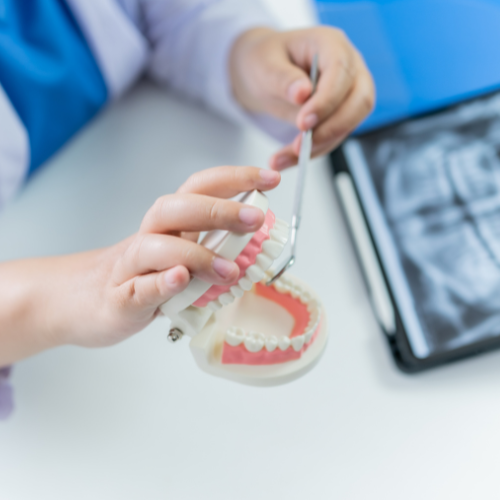Key Indications for Guided Bone Regeneration (GBR) Guided Bone Regeneration (GBR) is an essential procedure in modern dentistry applied in various situations where bone volume is lost or deficient. Understanding when GBR is necessary is fundamental for planning successful dental treatments. Below, we detail the most common indications for this procedure: Crucial Preparation for Dental Implants: This is perhaps the most frequent indication. After losing a tooth, the surrounding jawbone or maxillary bone tends to progressively resorb (shrink). If the remaining bone quantity or quality is insufficient to securely and stably support a dental implant, GBR becomes indispensable to reconstruct the necessary volume and ensure a solid foundation for the implant. Post-Extraction Socket Preservation: After a tooth extraction, especially if there was a prior infection or trauma, the socket (the cavity where the root was located) can collapse or leave bone defects. GBR is used in these cases (known as socket preservation) to fill and stabilize the extraction site, minimizing bone loss and preparing the area for future prosthetics or implants. Treatment of Defects Caused by Advanced Periodontal Disease: Severe periodontitis causes significant destruction of the bone supporting the teeth. In certain situations, GBR can be applied to attempt to regenerate some of this lost bone around natural teeth, aiming to improve their support and long-term prognosis. Alveolar Ridge Augmentation: When the jawbone or maxillary bone is too narrow or short to allow for the placement of adequately sized implants, GBR is used to increase the width and/or height of the alveolar ridge. This creates the appropriate bone dimensions for inserting implants safely and predictably. Correction of Bone Defects Around Existing Implants (Peri-implantitis): Bone loss can occasionally occur around implants that are already in function, a condition known as peri-implantitis. In selected cases, GBR can be part of the treatment to regenerate the lost bone around the implant, with the goal of improving its stability and helping control disease progression. How to Determine If You Need Guided Bone Regeneration? The need for GBR is determined through a detailed clinical and radiographic evaluation. Your dentist or periodontist will perform oral examinations and analyze imaging (such as 2D X-rays or 3D CT scans) to measure the quantity and quality of your available bone and diagnose any existing defects. At clinicanaturalsmile.com, we have experienced specialists in the diagnosis and planning of GBR treatments. We conduct a thorough analysis of your case, utilizing advanced diagnostic technology, to determine if this procedure is suitable for you and design the optimal treatment plan. Don't delay the evaluation of your bone health. Schedule your appointment with us today to discover if Guided Bone Regeneration is the right step towards restoring your smile and function!
Galeria de Fotos
¿Qué dicen nuestros pacientes?
Brindamos una atención responsable, comprometidos con obtener el mejor resultado posible para nuestros pacientes. Agradecemos su confianza, conoce sus opiniones.







